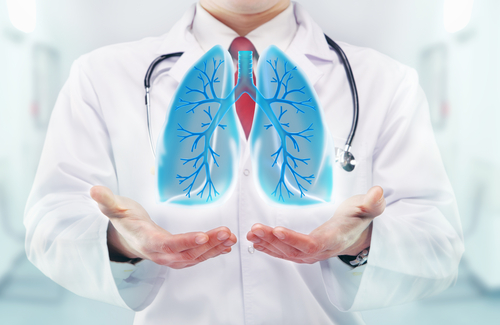Newly Identified Type of Immune Cells May Affect Lung Fibrosis Progression, Study Shows

A new subtype of immune cells carrying a unique genetic profile was identified and found to have an important role in the progression of fibrosis in the lungs, a study reports.
The study, “Reference-based analysis of lung single-cell sequencing reveals a transitional profibrotic macrophage,” was published in the journal Nature Immunology.
The healthy adult lung has two types of resident macrophages. One called alveolar macrophages has stem-like properties and can self-renew. The second, interstitial macrophages, can be found near the larger airways and in lung support tissues, and are involved in inflammatory responses.
During injury, another type of immune cells — monocyte-derived cells — goes to the lung to help the protection and repair processes. These cells are known to be involved in the profibrotic effect, but the mechanism that mediates this process is not fully understood.
To improve understanding on how these subgroups of immune cells could contribute to lung fibrosis, researchers evaluated their genetic profile. The team used advanced technology to perform single-cell RNA sequencing, and characterize macrophage populations in a mouse model of lung fibrosis.
To assist in data analysis, the team also developed a new computer algorithm, called SingleR (single-cell recognition), which could recognize and assign cellular identities based on the RNA content of each cell.
The Pulmonary Fibrosis News forums are a place to connect with other patients, share tips and talk about the latest research. Check them out today!
“Single-cell sequencing is relatively new technology that’s changing the face of biology,” Dvir Aran, PhD, a postdoctoral researcher at the University of California, San Francisco, and co-lead author of the study, said in a press release. “SingleR works by connecting new single-cell data with existing data that was collected over many years using older methods.
“The data sets that were already available helped us characterize a new cell type that wasn’t identified before,” Aran said.
Using this new approach, the team could identify different subpopulations of immune cells in the lungs of mice with fibrosis. In particular, they found a subpopulation of macrophages exclusively in the fibrosis mouse models, but not in healthy mice.
These cells had a gene profile similar to monocyte-derived cells but also to alveolar macrophages, which suggested it was a transitioning subpopulation.
“This cell state wasn’t recognized before, but it seemed to be very specific to the disease. These cells infiltrate the lung in a state similar to baseline interstitial macrophages, but then they start to lose their original identity and become alveolar. That transitional state is where they become profibrotic,” Aran said.
Importantly, when the team evaluated the levels of several biomarkers in these cell populations, using data available from lung samples of idiopathic pulmonary fibrosis patients and healthy controls, they discovered expression patterns like those found in the mice.
These results support the relevance of the identified genetic markers “to multiple contexts of fibrosis, mouse and human,” the researchers wrote.
Further analysis revealed that these disease-associated macrophages were mainly localized in fibrotic lesions, and that they could exert a profibrotic effect by producing a signaling molecule called platelet-derived growth factor A (PDGFA) in mouse lungs.
This secreted protein was needed to promote the migration of fibroblasts, which are responsible for the overproduction of collagen in lung fibrosis, and to boost their expansion. By blocking PDGFA activity, the team could effectively prevent the progression of fibrosis in mice.
“Our results suggest a potential strategy for combating fibrosis: targeting these transitional macrophages that localize to the fibrotic niche,” said Mallar Bhattacharya, MD, assistant professor of medicine and senior author of the study.
The team believes their results may be particularly relevant for patients with pulmonary fibrosis.







